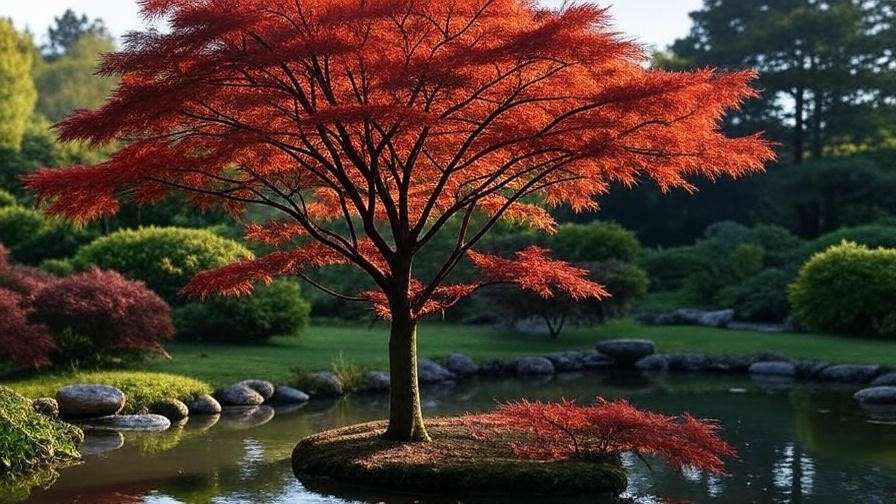Imagine a cascade of delicate, lacy leaves in fiery reds, vibrant oranges, or deep greens, transforming your garden into a serene masterpiece. The Japanese maple tree laceleaf is a showstopper, beloved by gardeners for its breathtaking foliage and graceful form. Whether you’re a seasoned horticulturist or a beginner, growing a thriving laceleaf maple can feel daunting—how do you ensure those vibrant colors and delicate leaves flourish? This comprehensive guide, crafted with decades of plant care expertise, delivers everything you need to know to cultivate a stunning Japanese maple tree laceleaf. From selecting the perfect cultivar to mastering seasonal care, we’ll solve common challenges and help you create a garden centerpiece that dazzles year-round. Let’s dive into the art and science of laceleaf care! 🌟
H2: Understanding the Japanese Maple Tree Laceleaf 🌳
H3: What Makes the Laceleaf Unique? 🌟
The Japanese maple tree laceleaf, scientifically known as Acer palmatum var. dissectum, captivates with its finely cut, feathery leaves that resemble delicate lace. Unlike upright Japanese maples, laceleaf varieties grow low and wide, often forming a weeping, mound-like shape that’s perfect for small gardens or containers. Their foliage, ranging from vivid crimson to emerald green, shifts dramatically with the seasons, offering year-round visual appeal. Popular cultivars like ‘Crimson Queen’ (deep red), ‘Garnet’ (orange-red), and ‘Tamukeyama’ (purple-red) each bring unique hues and textures. These ornamental trees thrive in USDA Hardiness Zones 5–8, making them versatile for many climates. Their compact size and elegant form make them ideal for Zen gardens, patios, or as focal points in landscapes.
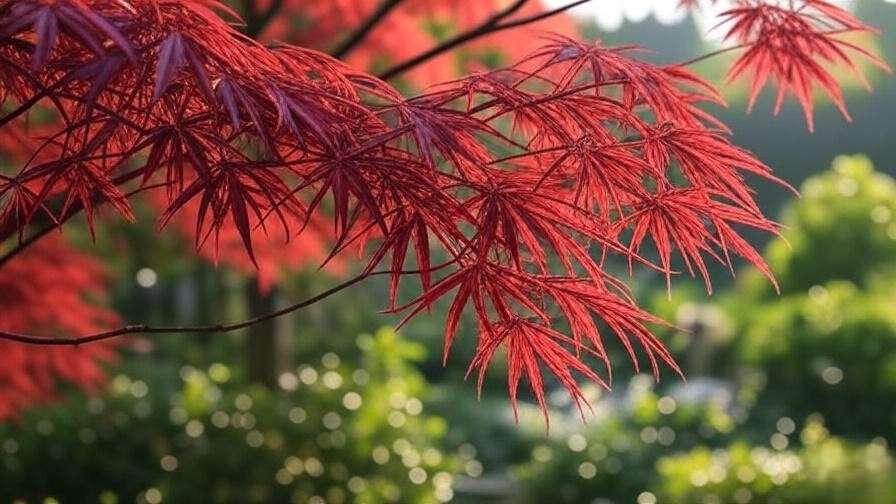
H3: Natural Habitat and Origins 🌍
Native to East Asia, particularly Japan, Korea, and China, Japanese maples thrive in temperate climates with well-drained soils. Laceleaf varieties evolved in forested understories, where dappled shade and moist, acidic soils support their delicate structure. Unlike their upright cousins, laceleaf maples have a cascading growth habit, mimicking the natural flow of water. “The laceleaf’s weeping form is nature’s art, perfectly suited for shaded, tranquil settings,” says Dr. Emily Tanaka, a horticulturist with over 20 years of experience studying Japanese maples. Understanding this natural context helps gardeners replicate ideal conditions, ensuring vibrant foliage and healthy growth.
H2: Choosing the Right Japanese Maple Tree Laceleaf 🪴
H3: Selecting the Perfect Cultivar 🌈
Choosing the right laceleaf cultivar is key to a thriving tree. Consider your garden’s size, climate, and aesthetic goals. For small spaces, ‘Crimson Queen’ (3–4 feet tall) offers deep red foliage, while ‘Tamukeyama’ (6–8 feet) suits larger areas with its rich purple hues. ‘Viridis’ provides bright green leaves for a softer look. Check your USDA Hardiness Zone (5–8 for most laceleafs) to ensure compatibility. Below is a quick comparison:
| Cultivar | Height | Foliage Color | Growth Rate |
|---|---|---|---|
| Crimson Queen | 3–4 ft | Deep red | Slow |
| Tamukeyama | 6–8 ft | Purple-red | Moderate |
| Viridis | 4–6 ft | Bright green | Slow |
Tip: Visit a local nursery to see cultivars in person for color and size accuracy.
H3: Where to Buy a Healthy Tree 🛒
Purchase from reputable nurseries or online suppliers certified by organizations like the American Nursery & Landscape Association. Look for trees with vibrant leaves, no signs of pests, and a well-formed root ball. Avoid bargain plants with yellowing leaves or damaged stems, as they may struggle to establish. Online retailers like Monrovia or Wayside Gardens offer healthy, guaranteed stock. “A healthy laceleaf starts with a quality source—don’t skimp on this step,” advises nursery expert John Yamada.
H2: Planting Your Japanese Maple Tree Laceleaf 🌱
H3: Best Time to Plant ⏰
Spring or early fall is the ideal time to plant a Japanese maple tree laceleaf, allowing roots to establish before extreme heat or cold. In warmer climates (Zones 7–8), fall planting reduces heat stress, while spring works well in cooler regions (Zones 5–6). Avoid planting during summer heatwaves or winter freezes to prevent root shock.
H3: Choosing the Perfect Location 📍
Laceleaf maples thrive in partial shade, receiving 4–6 hours of filtered sunlight daily. Too much direct sun can scorch delicate leaves, while deep shade may dull foliage colors. Choose a spot with well-draining, slightly acidic soil (pH 5.5–6.5) and protection from strong winds. A north- or east-facing location near a fence or larger trees is ideal. For example, gardener Sarah Lin transformed her shaded patio corner into a laceleaf haven with a ‘Garnet’ cultivar, noting its vibrant color in dappled light.
H3: Step-by-Step Planting Guide 🛠️
- Test Soil: Check pH and drainage; amend with compost if needed.
- Dig the Hole: Make it twice as wide and as deep as the root ball.
- Amend Soil: Mix in organic matter (e.g., peat moss) for acidity.
- Position Tree: Place the root ball level with the ground; avoid burying the trunk.
- Backfill and Water: Fill the hole, tamp gently, and water thoroughly.
- Mulch: Apply 2–3 inches of organic mulch (e.g., bark) to retain moisture.
Checklist: Ensure proper soil pH, avoid compacting roots, and water deeply after planting.
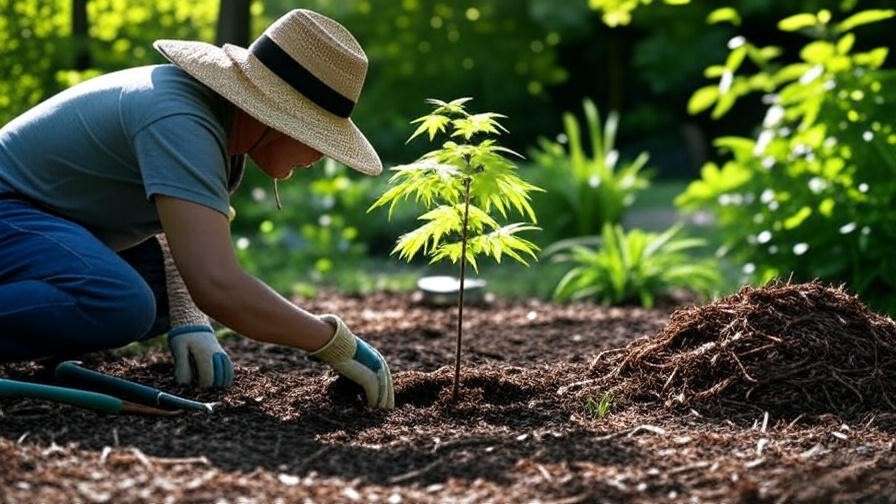
H2: Essential Care Tips for Vibrant Foliage 🍁
H3: Watering Needs 💧
Consistent moisture is critical for laceleaf maples, especially in their first two years. Water deeply once or twice weekly, ensuring the soil stays moist but not waterlogged. Established trees need less frequent watering but should never dry out completely. A 2021 study from the University of California found that maintaining soil moisture at 20–30% capacity optimizes laceleaf growth. Use a soaker hose for even distribution, and check soil 2 inches deep to gauge needs.
H3: Fertilizing for Healthy Growth 🌿
Use a low-nitrogen, slow-release fertilizer (e.g., 10-10-10) in early spring to promote healthy foliage without excessive growth. Apply sparingly—about 1/4 pound per tree—to avoid leaf burn. “Over-fertilizing is a common mistake that stresses laceleafs,” warns arborist Lisa Chen. Avoid fertilizing in late summer to prevent tender growth before winter.
H3: Pruning and Shaping ✂️
Light pruning maintains the laceleaf’s natural shape and removes dead or crossing branches. Prune in late winter or early spring before buds swell, using clean, sharp shears. Focus on thinning crowded areas to improve air circulation. Below is a simple pruning guide:
- Step 1: Remove dead or damaged branches.
- Step 2: Thin overlapping branches to open the canopy.
- Step 3: Shape lightly to enhance the weeping form.
Visual Aid: A diagram of proper pruning cuts can clarify this process.
H2: Protecting Your Laceleaf from Pests and Diseases 🐞
H3: Common Pests to Watch For 🕷️
Japanese maple tree laceleafs are generally hardy but can attract pests like aphids, scale insects, and spider mites. Aphids cause curled leaves, while scale appears as small, waxy bumps on stems. Spider mites leave fine webbing and stippled leaves. Inspect your tree weekly, especially under leaves. For organic control, try a DIY neem oil spray: mix 2 teaspoons of neem oil, 1 teaspoon of mild dish soap, and 1 quart of water. Spray affected areas every 7–10 days. For severe infestations, consult a local nursery for chemical options like insecticidal soap. Tip: Encourage natural predators like ladybugs by planting companion flowers like marigolds.
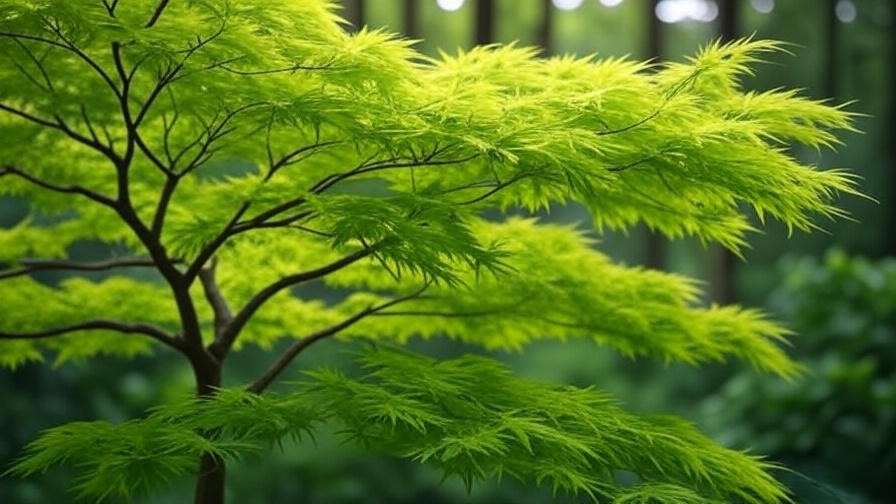
H3: Preventing and Treating Diseases 🩺
Fungal diseases like verticillium wilt and powdery mildew can affect laceleaf maples. Verticillium wilt causes wilting branches and discolored leaves, while powdery mildew appears as white patches on foliage. Prevent issues by ensuring good air circulation, avoiding overhead watering, and maintaining soil health. If wilt is suspected, remove affected branches and sterilize tools to prevent spread. For powdery mildew, apply a fungicide labeled for ornamental trees. According to Cornell University’s Plant Disease Diagnostic Clinic, proper sanitation and early intervention are key to managing maple diseases. “Healthy soil and vigilant care are your best defenses,” notes plant pathologist Dr. Maria Gonzalez.
H2: Seasonal Care for Year-Round Beauty 📅
H3: Spring and Summer Care 🌞
Spring is a critical time for laceleaf maples. Apply a 2–3 inch layer of organic mulch (e.g., shredded bark) to retain moisture and regulate soil temperature. Monitor for pests like aphids, which thrive in new growth. During summer, protect leaves from scorching by ensuring partial shade, especially in hotter climates (Zones 7–8). If temperatures exceed 85°F, mist leaves lightly in the early morning to reduce stress. Water consistently, aiming for 1–2 inches per week, depending on rainfall. A gardener in Virginia shared, “My ‘Crimson Queen’ thrives under a canopy of taller trees, where it gets just enough light to glow.”
H3: Fall and Winter Care ❄️
Fall showcases the laceleaf’s vibrant colors—reds, oranges, and purples that rival any autumn display. To enhance foliage, avoid late-season fertilizing, which can dull colors. Before winter, add a fresh layer of mulch to insulate roots, especially in colder zones (5–6). In areas with harsh winters, wrap young trees in burlap to protect against wind and frost. For example, a Minnesota gardener reported success overwintering a ‘Tamukeyama’ by wrapping it and mounding mulch around the base. Prune lightly in late winter to prepare for spring growth.
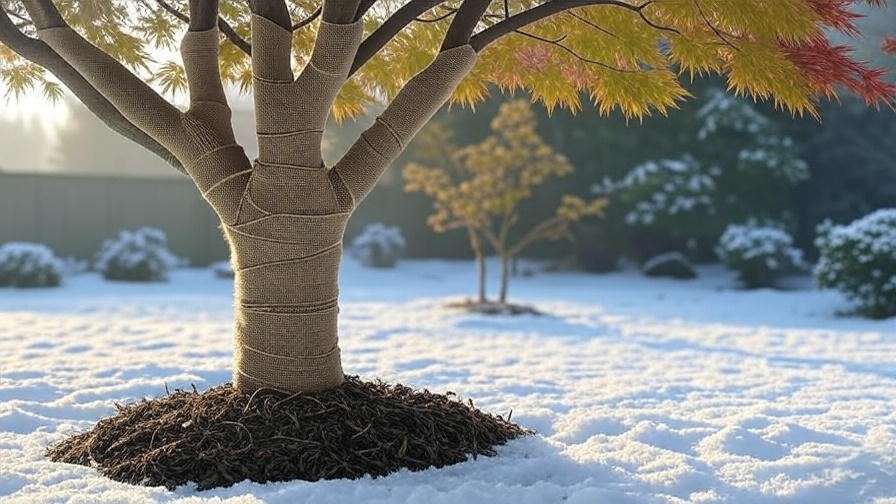
H2: Troubleshooting Common Laceleaf Problems 🛑
Despite their beauty, laceleaf maples can face challenges. Below is a diagnostic table to address common issues:
| Symptom | Cause | Solution |
|---|---|---|
| Brown, crispy leaves | Leaf scorch (sun/heat stress) | Increase shade, water deeply, and mulch to retain moisture. |
| Drooping leaves | Overwatering or poor drainage | Check soil drainage; reduce watering frequency and ensure proper soil mix. |
| Stunted growth | Nutrient deficiency or wrong pH | Test soil pH (aim for 5.5–6.5); apply balanced fertilizer in spring. |
| Yellowing leaves | Chlorosis (iron deficiency) | Apply chelated iron or adjust soil pH with sulfur. |
Tip: Test soil pH annually, as laceleafs are sensitive to alkaline conditions. A case study from the University of Georgia’s horticulture department found that correcting soil pH resolved 80% of laceleaf growth issues.
H2: Enhancing Your Garden with Japanese Maple Tree Laceleaf 🌼
Laceleaf maples are versatile design elements. In Zen gardens, pair them with smooth pebbles and moss for a tranquil effect. For container gardening, use a dwarf cultivar like ‘Viridis’ in a wide, shallow pot with good drainage. Companion plants like hostas, ferns, or azaleas complement their delicate foliage and thrive in similar conditions. A Seattle gardener transformed her small backyard with a ‘Garnet’ laceleaf as the centerpiece, surrounded by low-growing ferns, creating a lush, inviting space. Visual Aid: A gallery of laceleaf maple garden designs can inspire readers to experiment with layouts.

H2: FAQs About Japanese Maple Tree Laceleaf Care ❓
Q: How fast do laceleaf maples grow?
A: Laceleaf maples grow slowly, typically 6–12 inches per year, depending on the cultivar and conditions. Patience is key for their compact, elegant form.
Q: Can laceleaf maples thrive in containers?
A: Yes! Dwarf varieties like ‘Crimson Queen’ are ideal for containers. Use a well-draining potting mix and ensure the pot has drainage holes.
Q: Why is my Japanese maple tree laceleaf dying?
A: Common causes include overwatering, poor drainage, or leaf scorch. Check soil moisture, ensure proper shade, and test soil pH to diagnose the issue.
Q: How do I protect my laceleaf from winter cold?
A: Mulch heavily around the base and wrap young trees in burlap in Zones 5–6 to shield from frost and wind.
H2: Conclusion 🌟
Growing a stunning Japanese maple tree laceleaf is a rewarding journey that transforms any garden into a work of art. By choosing the right cultivar, planting in the perfect spot, and following expert care tips—watering, fertilizing, pruning, and protecting—you’ll enjoy vibrant, lacy foliage year-round. Whether you’re showcasing its fiery fall colors or creating a serene Zen garden, this guide equips you with the tools to succeed. Start today, and share your laceleaf’s beauty with us in the comments or on social media! What’s your favorite cultivar, and how will you make it shine? 🌿

